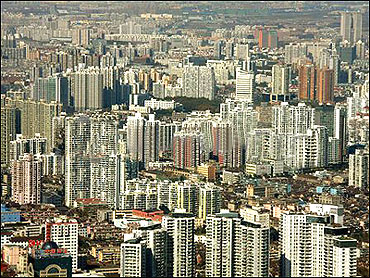 | « Back to article | Print this article |
 In a three-part series, Business Standard has explored how agricultural land has been commercially tapped and exploited over the years by developers, often with ample help from the government, and its impact on the stakeholders.
In a three-part series, Business Standard has explored how agricultural land has been commercially tapped and exploited over the years by developers, often with ample help from the government, and its impact on the stakeholders.
The series begins with the Gurgaon-Manesar region, next to Delhi. In the next two parts, we will look at Rajarhat on the fringes of Kolkata and the Mumbai-Pune and Mumbai-Nashik belt.
As the glitzy malls, skyscraper corporate offices and plush residential complexes lining Gurgaon on the National Highway-8 stretch draw to a close, the road to Pataudi, a 30-km drive off the Sohna Road, offers glimpses of agriculture fields, interspersed with a school, a college, a couple of private offices, residences and a 'palace' known more for its Bollywood connect.
Till one reaches Wazirpur and then Hayatpur on the Pataudi Road, where concrete is increasingly replacing agricultural land.
In places where builders haven't yet started construction, they have ensured their nameplates are firmly in place.
Tulip Infra, Rahejas, Siddhartha, Ramprastha, and Sare Homes are among those visible in the area.
The real game-changer here is the master plan of Gurgaon-Manesar, revised thrice in the past five years, say land dealers and brokers, doing brisk business in the region.
The forever modifying plan, that has seen residential land use increase from 14,930 to 16,010 hectares (ha) and commercial use from 1,404 to 1,616 ha in five years, has much to do with how builders have been able to knock down many boundaries to spread their reach beyond the outskirts of Gurgaon.
Wazirpur and Hayatpur, among many other such haunts, are part of the Gurgaon-Mansesar 2025 master plan notified in 2011, just four years after the 2021 master plan was out in 2007.
The draft Gurgaon-Manesar 2031 Master Plan, awaiting notification, is sure to unlock value for many more upcoming builders which took a chance on areas unknown and unsung so far.
On an average, a land-lot acquired for Rs 25 lakh (Rs 2.5 million) an acre in 2003 is now Rs 6-7 crore (Rs 60-70 million) an acre.
In some cases, the rates have crossed Rs 15 crore (Rs 150 million) an acre!
Once the 2031 plan gets notified, the Special Economic Zone allocated some five years earlier to businesses, including to Reliance Industries Ltd, will get struck off from the area, as the draft shows, making so much more room for builders to make houses, malls, hotels and offices.
Estimates suggest farm land has already been reduced to less than five per cent of the total urban area covered under the latest master plan of Gurgaon-Manesar. Soon, there will be none left, says a farmer-leader.
Costs & profits
Some say the hyper-growth and increasing demand in the Gurgaon region prompted such quick revisions in the master plan, unusual in any other region.
"In the last six years, residential units in Gurgaon have grown 400 per cent," said Samarjit Singh, managing director, IndiaHomes, a brokerage company.
But land dealers, on condition of anonymity, talk discreetly about how the master plan acts as a gold mine for the officials drafting it, the subject of strong lobbying by developers.
Typically, developers want their land in the area, acquired cheap over the years, to be notified in the plan, so that they can make a killing at the time of selling apartments.
But conversion from agricultural land for grant of a change in land use turns out to be a costly affair for a developer, said Sanjay Sharma, MD, Qubrex, a real estate consultancy.
The official conversion charges are pegged at Rs 158 a sq metre for group housing, and Rs 1,260 to Rs 1,470 a sq m in commercial projects, depending on the FAR (floor